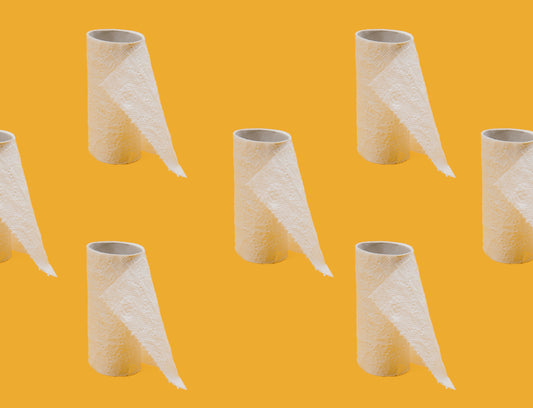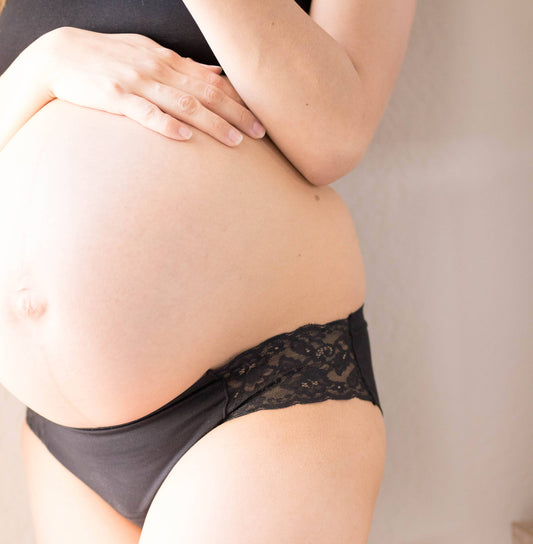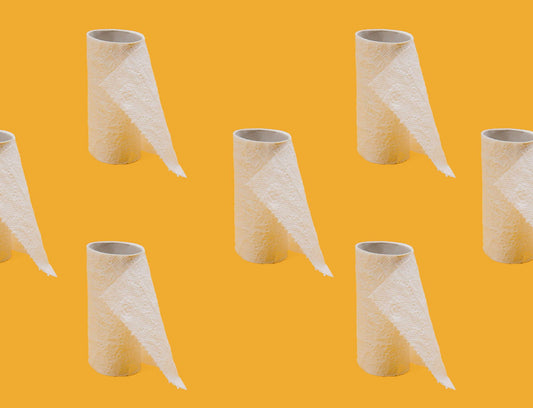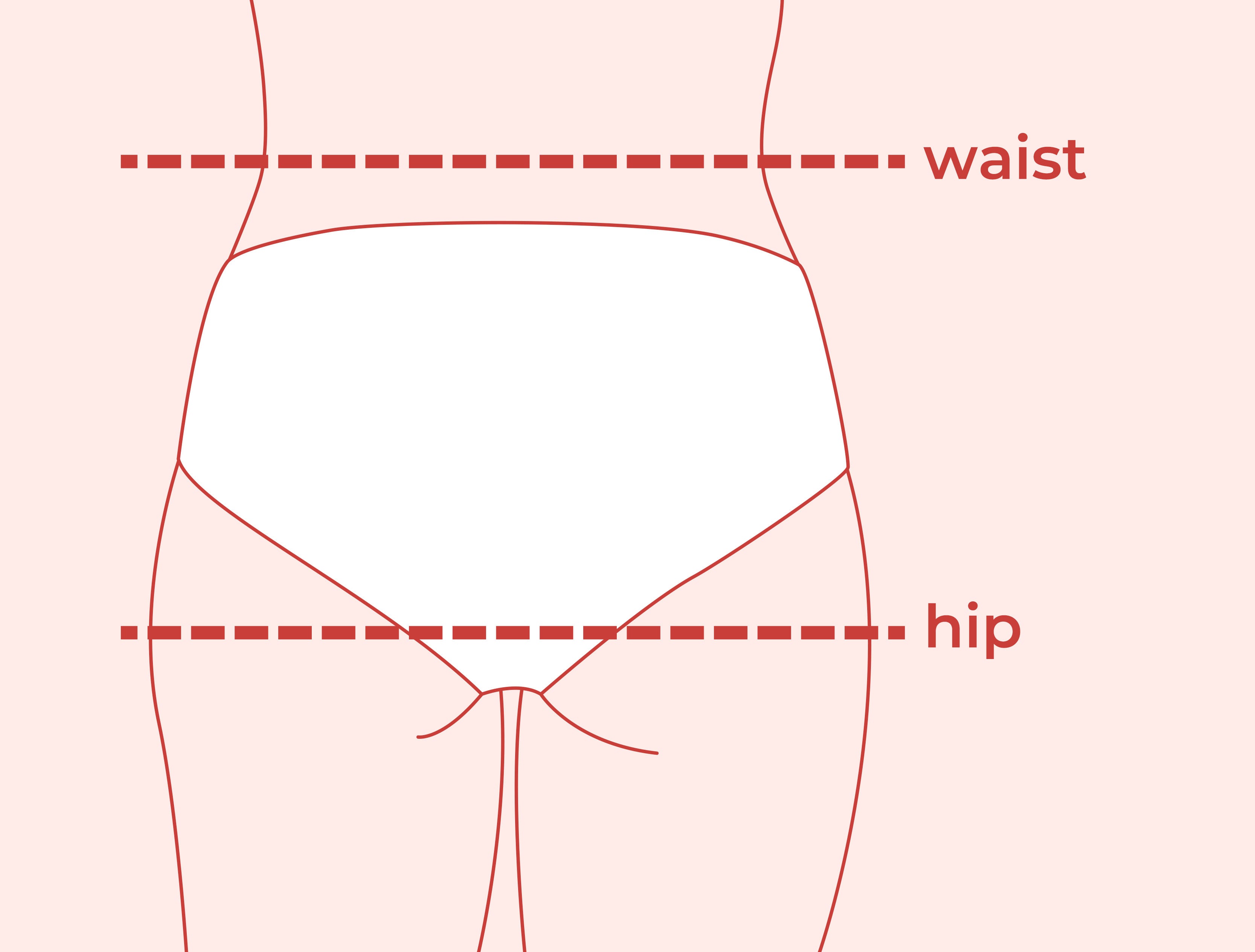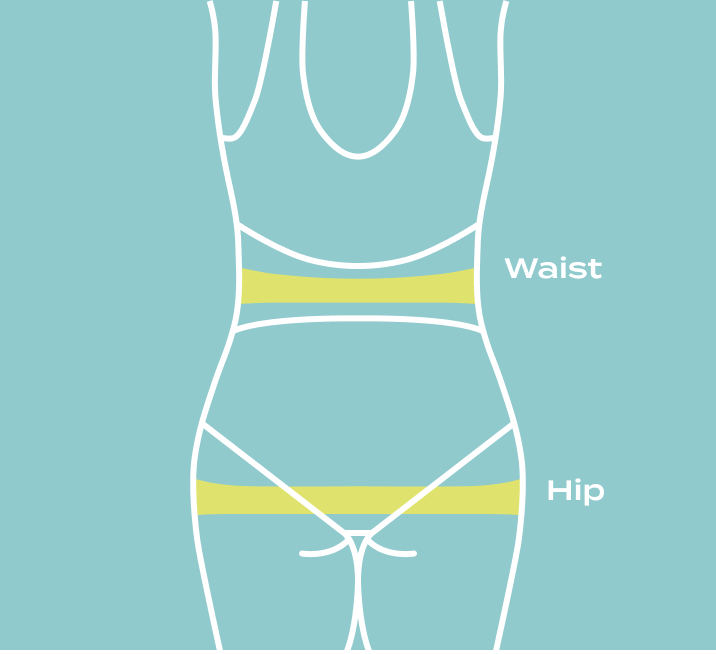The menstrual cycle tends to differ from person to person, but it is generally counted from the first day of one period to the first day of the next. Menstrual flow can occur every 21 to 35 days and generally lasts 2-7 days.
While the heaviest part of the menstrual flow typically lasts between two and seven days, it is common to experience spotting in between the prominent part of menstrual flow. Spotting is separate from the menstrual flow itself and can be caused by a number of factors.
What is spotting?
Spotting can be identified as light, irregular bleeding that occurs outside of the normal menstrual cycle. Sometimes, it can be close to your period, but not always. It can be helpful to track when spotting or bleeding occurs. In some cases, you might notice a pattern in spotting, such as it occurring near ovulation in your cycle. In most cases, spotting in between periods, is no cause for concern, but if you have concerns speak to your doctor.
What causes spotting between periods?
Spotting between periods can be classified as abnormal vaginal bleeding, although it might not be cause for concern. There are many causes for spotting or bleeding between periods. Some are easier to treat than others, and some need medical attention. You should discuss any abnormalities with your doctor for proper diagnosis.
Potential causes of bleeding between periods include the following. As you can see, some are more serious than others.
- Stress
- Change in medication
- Vaginal dryness
- Hormone imbalance
What does spotting look like?
Spotting does look different than a normal period flow. Generally, it’s identified as small spots of red or brown liquid on your underwear. It’s much lighter in flow than a regular period. It gets its name due to shared similarities in appearance as discharge, something to keep in mind as you identify spotting. Spotting usually does not call for full protection, but light protection may be preferred.
Spotting gets its name from the physical appearance of the discharge. It usually comes in the form of small spots of red or brown liquid on your underwear. A big difference between spotting and period blood is that spotting is typically much lighter in volume, and often has a darker color than menstrual blood. Spotting is usually so light that you can simply switch to your period panties or wear a thin liner when you notice it.
Is spotting between periods normal?
Though it is not considered normal, most women have spotting between their periods at some point. Usually, it's nothing to worry about, but if you are concerned, you should contact your doctor.
What is the difference between spotting and a period?

Spotting and a period are not the same thing, and you can often tell the difference by the appearance of spotting. While they share similarities, if you learn more about spotting, you can work to differentiate the two. Spotting is light and often discharge-like. Menstrual blood is thicker and heavier. Periods may also come along with discomfort or PMS symptoms such as bloating or cramps. Menstrual blood is the result of your uterus shedding its lining, while spotting comes from the upper or lower reproductive tract, such as the cervix or the vagina.
Why am I spotting after my period ends - what are the causes?

Spotting is common and can be caused by a number of things. Remember, it’s different from your period, so it will likely come at different times too. Tracking cycles can help you recognize when you might more likely be spotting as opposed to bleeding on your period. Here are some reasons why you might be spotting after your period ends.
Hormonal imbalance
Estrogen and progesterone play a big role in regulating your cycle. If one or both get out of balance, you might experience spotting. Hormonal balance can be affected by dysfunctional ovaries, thyroid gland problems, and beginning or ending birth control pills.
Some women may also experience spotting during ovulation, which comes before a period. This, too, can result from hormonal imbalances.
How long does spotting last?

Spotting can last for various amounts of time. Due to its irregularity and various causes, it’s difficult to say exactly how long it can or should last. Commonly, though, spotting can be anything from a one-time thing to minor bleeding for up to seven days.
How can I stop spotting between and after periods?
In some cases, spotting between and after periods can not be prevented. However, if you take birth control pills, do your best to take them as instructed to avoid potential hormonal imbalances. It can also help to exercise moderately to promote better health while reducing stress. If any pain is associated with spotting, you can try ibuprofen, which can actually help reduce bleeding. If you’re experiencing pain and spotting or persistent bleeding, though, you may want to contact your doctor.
How long can you spot after your period?
Some women may experience spotting around ovulation, which typically occurs about 14 days after the start of your period. During ovulation, an egg is released from an ovary which can cause spotting. This spotting usually only lasts for one to two days and is typically light bleeding
Can spotting happen after a missed period?
Spotting following a missed period may be a sign of pregnancy. Typically it would occur about 10-14 days after conception.
Can spotting after a period be a sign of pregnancy?
Spotting can be a sign of early pregnancy, and it’s generally associated with implantation bleeding. Implantation bleeding is usually light and lasts for a few days, about 10-14 days after conception. It can also occur around the time your period is expected. During the first five to eight weeks of pregnancy, spotting can occur.
I’m seeing brown discharge after my period ends - what is it, and why?
Finding discharge that’s brown can leave you a little perplexed - what is it? In most cases, it’s nothing to be concerned about. It’s likely old blood clearing out. It can happen before a menstrual period as the vagina cleans itself out to prepare.
When should I see a doctor for spotting?
While spotting can be normal, there are some cases where you might want to seek medical attention. If at any point you have concerns or anxieties about your health, see a doctor.
When you notify your doctor, they will likely have questions such as how often it’s occurring, how long the spotting lasts, and so forth. Gathering this information should not delay your visit to the doctor, but take any time you can to organize the timeline and symptoms. While spotting can be harmless, it can also be uncomfortable and a little messy. There are ways to prevent spotting, such as maintaining a healthy lifestyle and weight, exercising regularly, and reducing stress, but sometimes it’s unavoidable. Wearing leakproof underwear for spotting is a smart way to protect from spotting. Our period underwear is designed to pull moisture away from the body to keep you feeling dry, comfortable, and confident. These buttery-soft undies are just like your basics but made better. Meet the new MVP in your underwear drawer, shop Proof® today.
Related Posts
Sources:
NHS. Periods And Fertility in the Menstrual Cycle,
https://www.nhs.uk/conditions/periods/fertility-in-the-menstrual-cycle/#:~:text=The%20length%20of%20the%20menstrual,to%2035%20days%2C%20are%20normal
Planned Parenthood. How Do I Know if my Menstrual Cycle is Normal?
https://www.plannedparenthood.org/learn/health-and-wellness/menstruation/how-do-i-know-if-my-menstrual-cycle-normal#:~:text=Your%20menstrual%20cycle%20lasts%20from,different%20from%20person%20to%20person
Vira. Difference Between a Period and Spotting,
https://vira.care/blogs/the-body-knowledge-hq/difference-between-a-period-and-spotting
Healthdirect. Bleeding Between Periods,
https://www.healthdirect.gov.au/bleeding-between-periods#:~:text=Bleeding%20between%20periods%20is%20common,be%20discussed%20with%20your%20doctor
Ohio State Health & Discovery. Why Spotting Between Periods Happens and When to be Concerned,
https://health.osu.edu/health/ob-gyn/spotting-between-periods#:~:text=About%2014%20days%20after%20the,be%20discussed%20with%20your%20doctor
Healthline. How Long Does Implantation Bleeding Last? What to Expect,
https://www.healthline.com/health/pregnancy/how-long-does-implantation-bleeding-last#:~:text=Implantation%20bleeding%20may%20occur%20in,time%20of%20your%20missed%20period
Healthline. Vaginal Bleeding Between Periods,
https://www.healthline.com/health/vaginal-bleeding-between-periods


